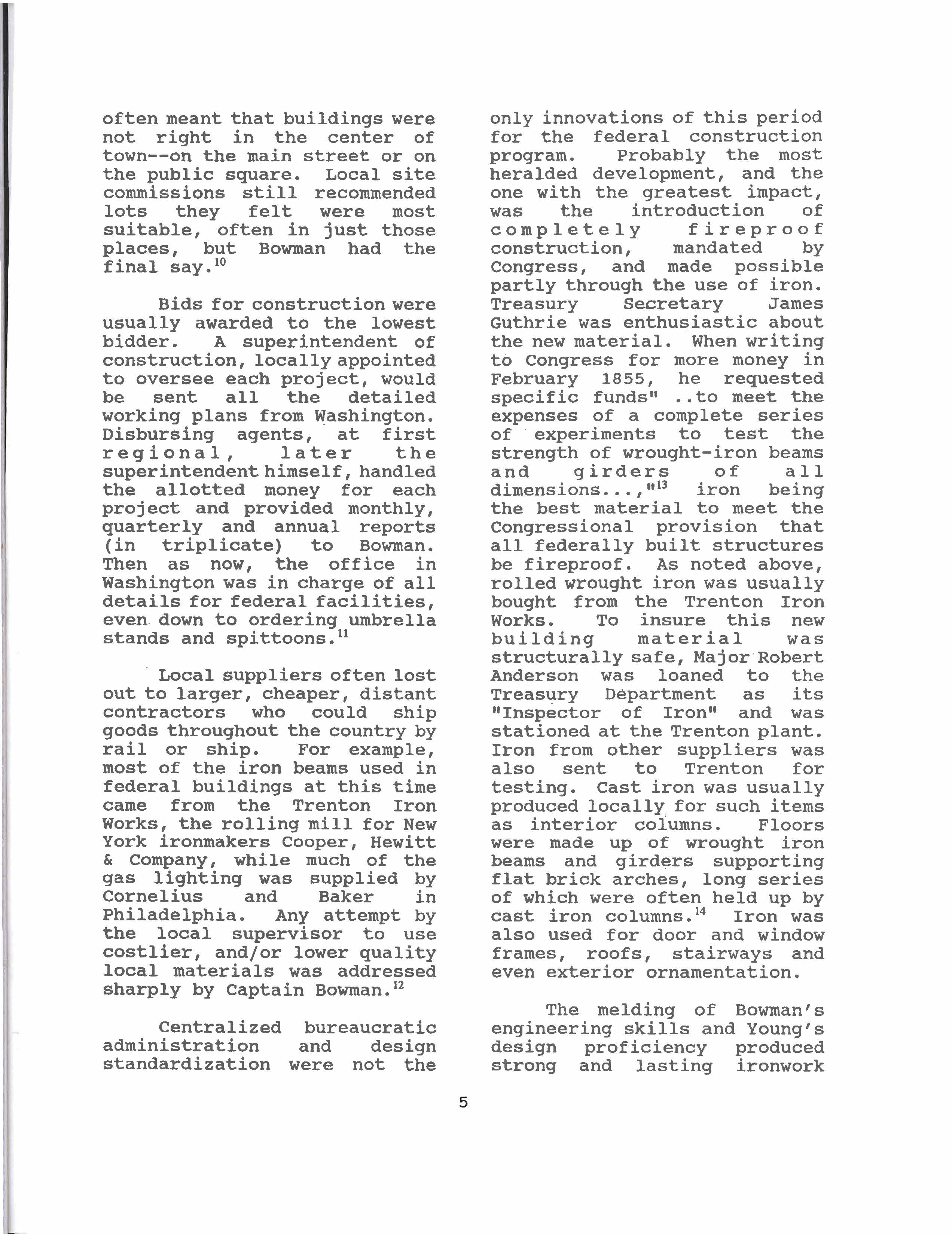

(Continued from Page 4)
often meant that buildings were not right in the center of town--on the main street or on the public square. Local site commissions still recommended lots they felt were most suitable, often in just those places, but Bowman had the final say.
Bids for construction were usually awarded to the lowest bidder. A superintendent of construction, locally appointed to oversee each project, would be sent all the detailed working plans from Washington. Disbursing agents, at first regional, later the superintendent himself, handled the allotted money for each project and provided monthly, quarterly and annual reports (in triplicate) to Bowman. Then as now, the office in Washington was in charge of all details for federal facilities, even down to ordering umbrella stands and spittoons.
Local suppliers often lost out to larger, cheaper, distant contractors who could ship goods throughout the country by rail or ship. For example, most of the iron beams used in federal buildings at this time came from the Trenton Iron Works, the rolling mill for New York ironmakers Cooper, Hewitt and Company, while much of the gas lighting was supplied by Cornelius and Baker in Philadelphia. Any attempt by the local supervisor to use costlier, and/or lower quality local materials was addressed sharply by Captain Bowman.
Centralized bureaucratic administration and design standardization were not the only innovations of this period for the federal construction program. Probably the most heralded development, and the one with the greatest impact, was the introduction of completely fireproof construction, mandated by Congress, and made possible partly through the use of iron. Treasury Secretary James Guthrie was enthusiastic about the new material. When writing to Congress for more money in February 1855, he requested specific funds “...to meet the expenses of a complete series of experiments to test the strength of wrought-iron beams and girders of all dimensions ..., " iron being the best material to meet the Congressional provision that all federally built structures be fireproof. As noted above, rolled wrought iron was usually bought from the Trenton Iron Works. To insure this new building material was structurally safe, Major Robert Anderson was loaned to the Treasury Department as its "Inspector of Iron” and was stationed at the Trenton plant. Iron from other suppliers was also sent to Trenton for testing. Cast iron was usually produced locally for such items as interior columns. Floors were made up of wrought iron beams and girders supporting flat brick arches, long series of which were often held up by cast iron columns. Iron was also used for door and window frames, roofs, stairways and even exterior ornamentation.
The melding of Bowman's engineering skills and Young's design proficiency produced strong and lasting ironwork
(Continued on Page 6)
This site is sponsored by the Friends of the Old Naval Hospital
Last updated September 25, 2009